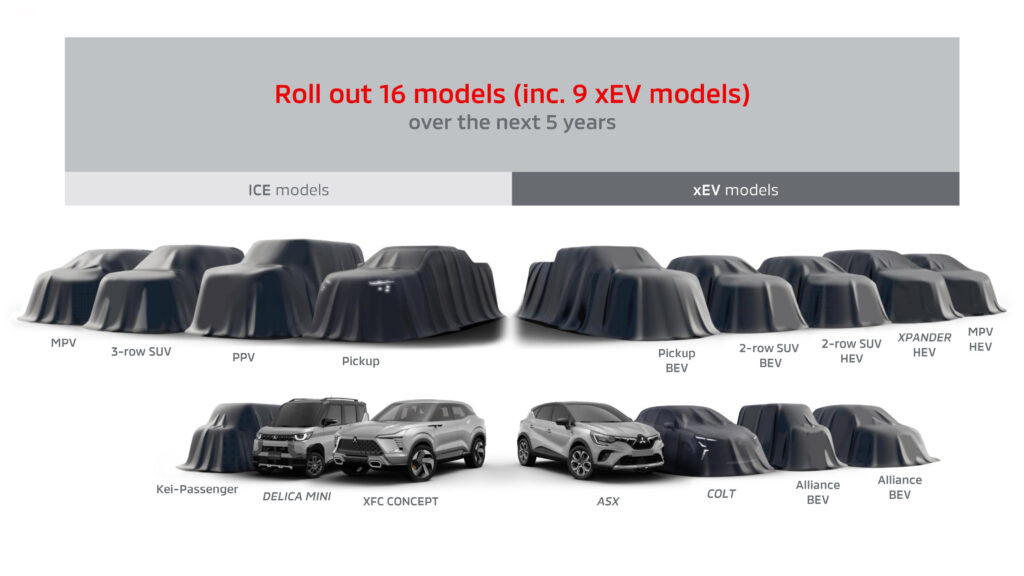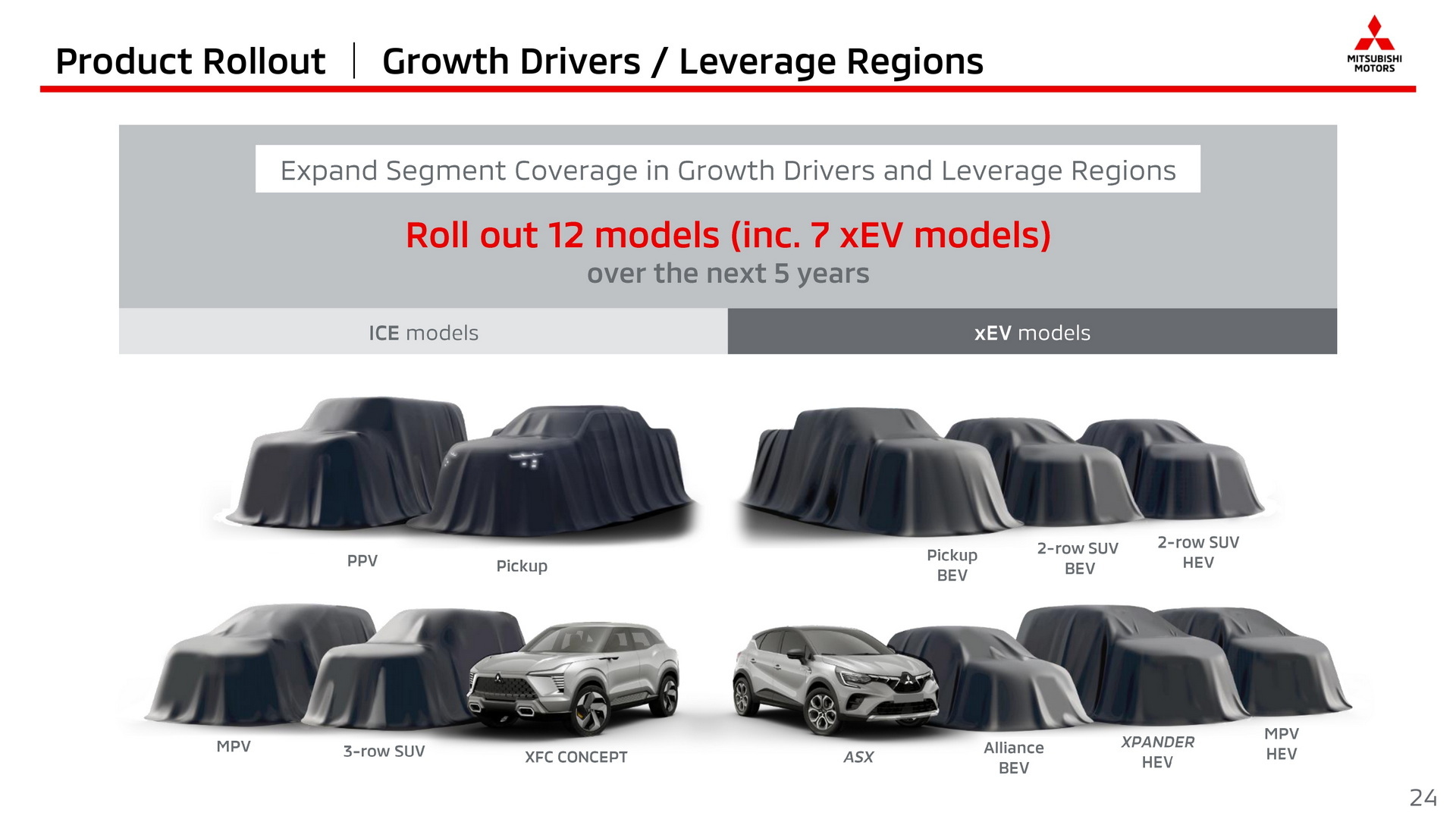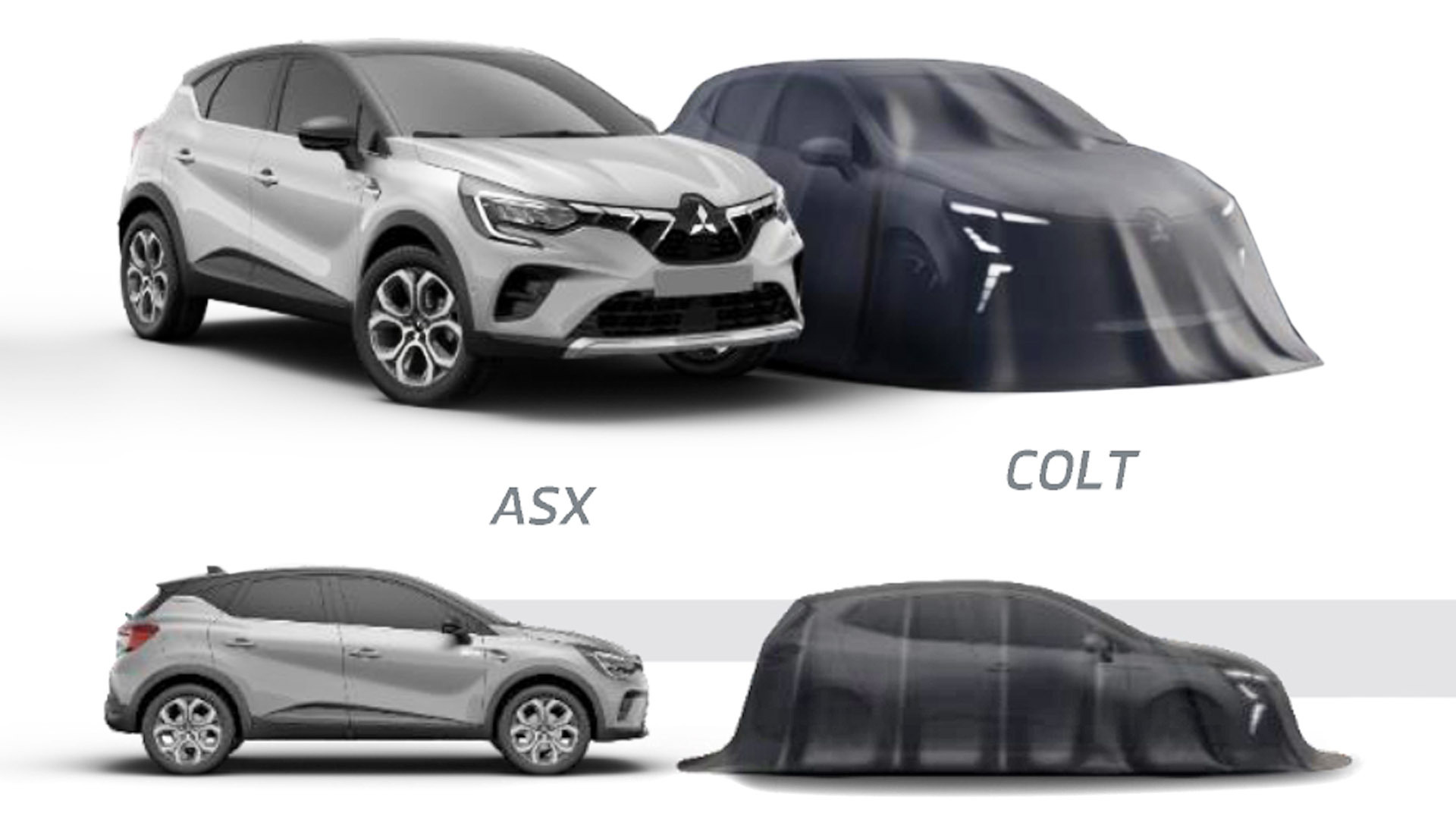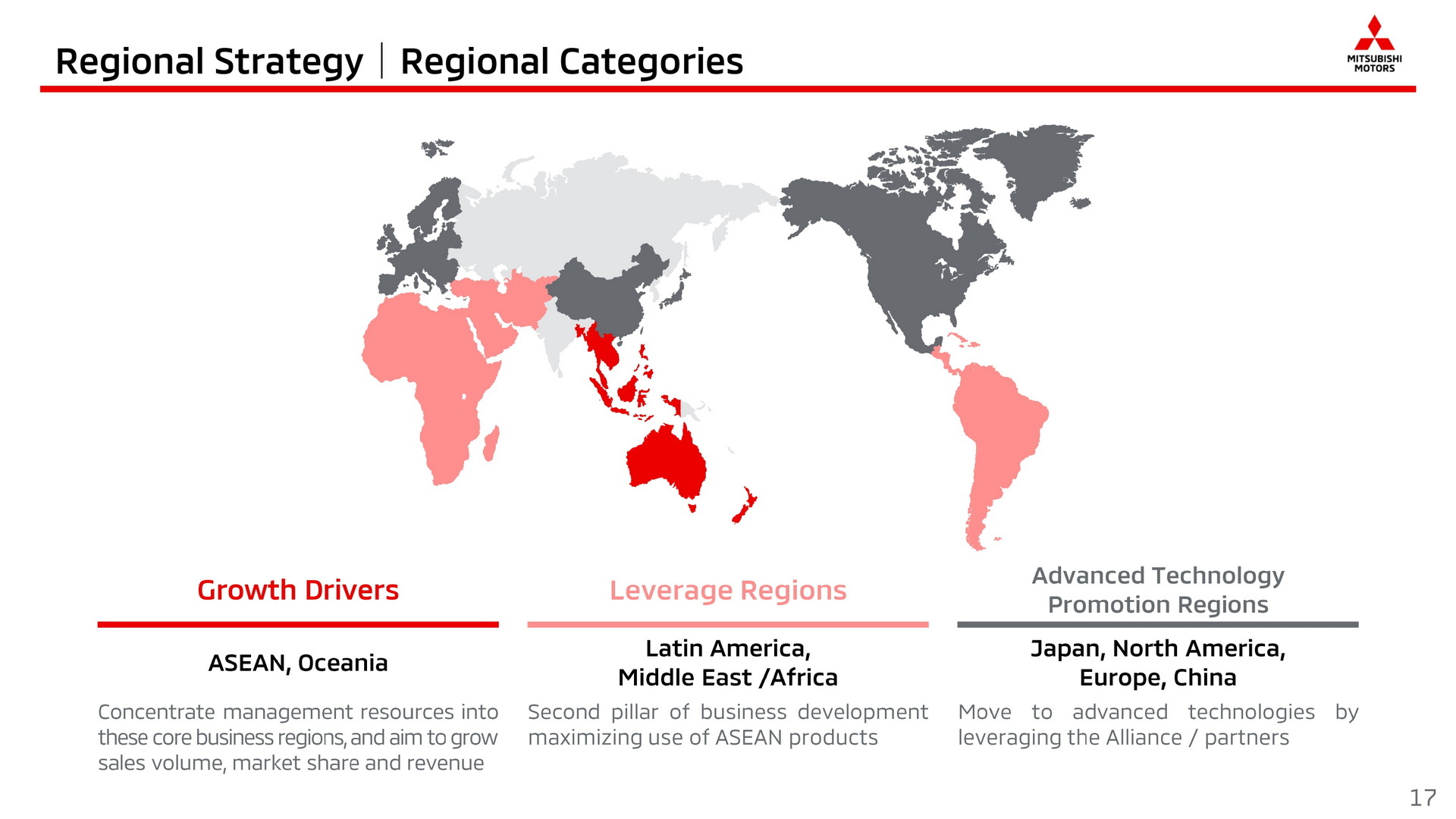Mitsubishi announced its medium-term strategy called “Challenge 2025” accompanied by a group-shot teaser of no less than 16 upcoming model launches scheduled for the next five years. Among them, there are ICE-powered, hybrid, and fully electric models covering the kei car, supermini, two-row SUV, three-row SUV, pickup, and minivan segments. In order to make this happen, Mitsubishi will increase its R&D investment and amplify its collaboration with the other two members of the Alliance (Renault and Nissan).
The 16 upcoming models include 9 with some sort of electrification, 4 of which will be fully electric. While most are shown as mockups hiding under wraps, there are a few revealing teasers.
Read: All The New Models Renault, Nissan, And Mitsubishi Will Launch Through 2026
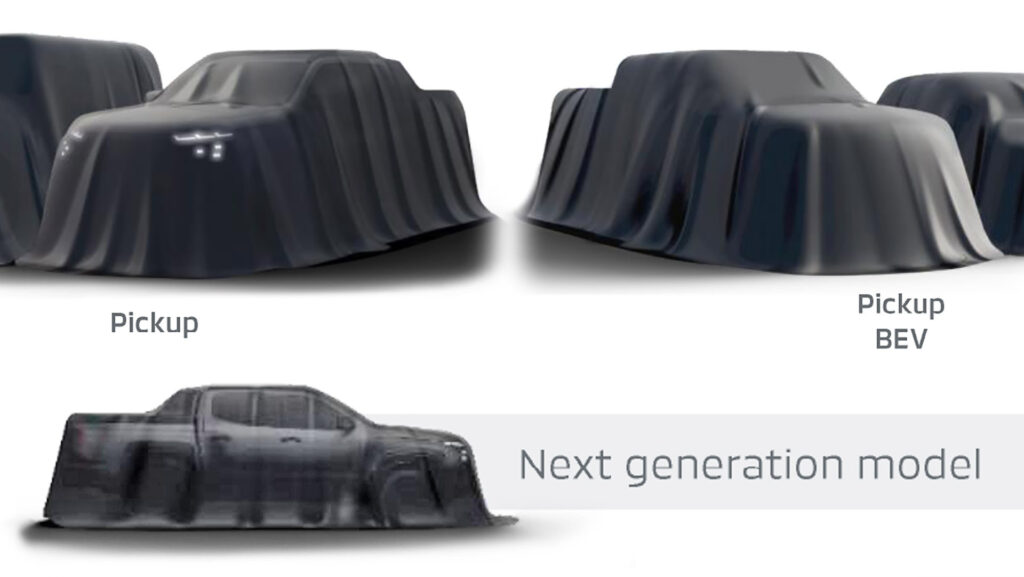
The most notable is the ICE-powered pickup which is expected to arrive in 2023 as a successor to the Mitsubishi Triton/L200. The model reveals its lighting signature and its profile which is characterized by the boxy wheel arches and fender extensions. The greenhouse and the proportions confirm it will be a sibling to the Nissan Navara, sharing the same ladder-frame underpinnings.
The same architecture will be used for a new pick-up passenger vehicle (PPV) in 2025, likely serving as a replacement for the Mitsubishi Pajero Sport and featuring a greater differentiation from the L200/Triton in terms of exterior design. The company also teased a fully electric pickup which appears to be different from the ICE-powered model judging from the silhouette.
Among the other ICE-powered models there is the production version of the XFC Concept coming in spring 2023, a three-row SUV for 2025 that seems to be unrelated to the Outlander, a new minivan that is different from the XPander, and a new passenger kei car set to join the recently revealed Delica Mini.
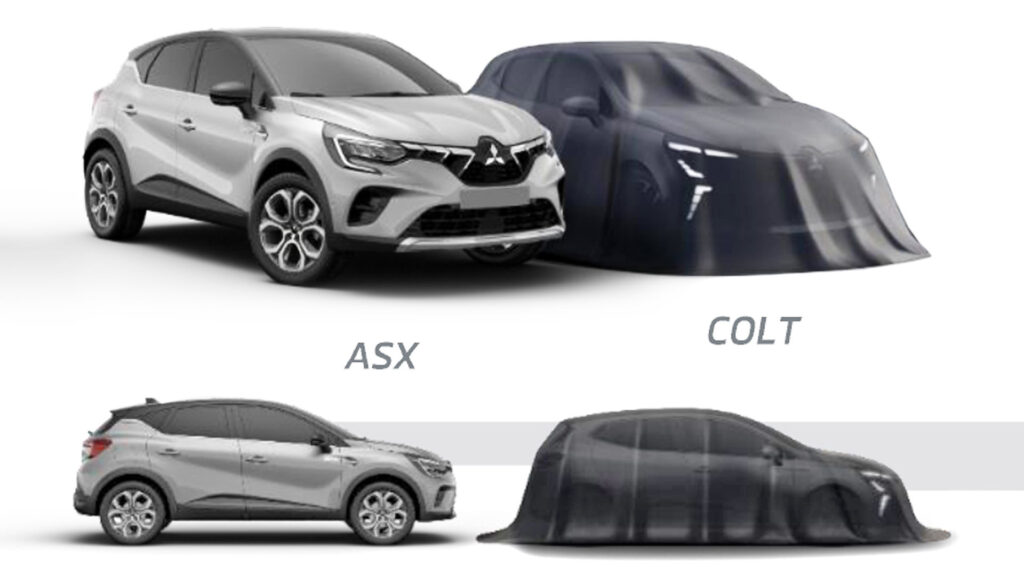
On the hybrid front, another revealing teaser is the Mitsubishi Colt supermini, which is a rebadged version of the Renault Clio. The LED lighting signature suggests that the Colt will be based on the soon-to-be facelifted Clio, with styling changes limited to the redesigned grille and Mitsubishi badges. The same strategy was applied to the Mitsubishi ASX which was revealed last year as a rebadged Renault Captur.
The Mitsubishi XPander will get a hybrid version in 2024, followed by an electrified variant of the aforementioned ICE-powered minivan. Then, as we move closer to 2025, a new hybrid two-row SUV will appear, possibly as a replacement for the Eclipse Cross.
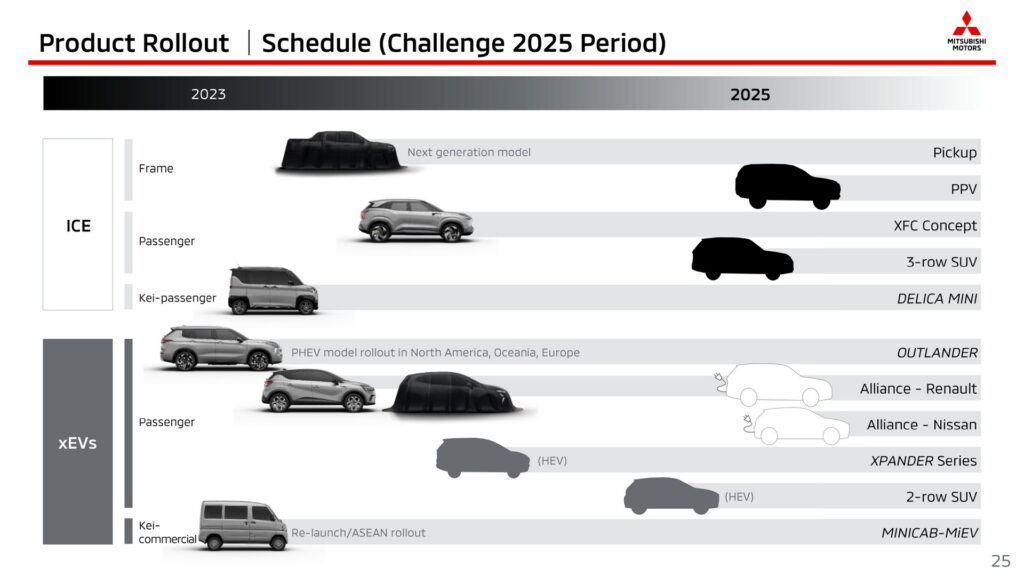
As for Battery Electric Vehicles (BEVs), Mitsubishi teased four models including the fully electric pickup. Two of them will be sourced from the Alliance members – one shared with Renault and the other with Nissan. Finally, a tiny BEV will compete with the army of upcoming zero-emission kei cars in Japan, continuing the legacy of Mitsubishi which has been a pioneer in the electrification of this segment.
Increased R&D Investment And Heavier Focus On ASEAN/Oceania Markets
In order to support the upcoming debuts, the company announced a 30% increase in R&D expenses and capital investment. Starting in 2026, 70% of the investments will go to electrification, IT, and new businesses. By 2030, Mitsubishi will invest ¥210 billion ($1.5 billion) in 15 GWh worth of batteries.
Mitsubishi targets a sales volume of 1.1 million units and an operating profit of 220 billion yen with a 7% profit margin. The main drivers of this growth will be the ASEAN and Oceania markets, where the company will concentrate its efforts. Latin America, the Middle East, and Africa will get more ASEAN products. As for Japan, North America, Europe, and China, those regions will rely mostly on the Alliance for moving to “advanced technologies”.
On a global scale, 50% of Mitsubishi’s sales will account for electrified models by 2030, and 100% by 2035. Thus, by the same year, vehicle CO2 emissions will be reduced by 40%, and operational emissions by 50% helping the automaker move closer to a carbon-neutral future.




